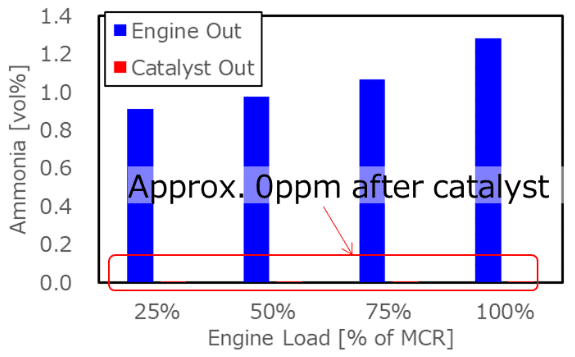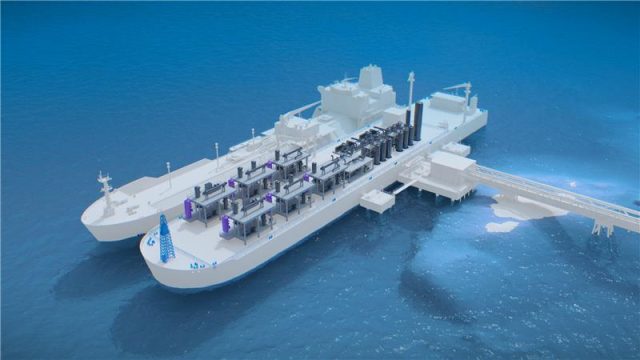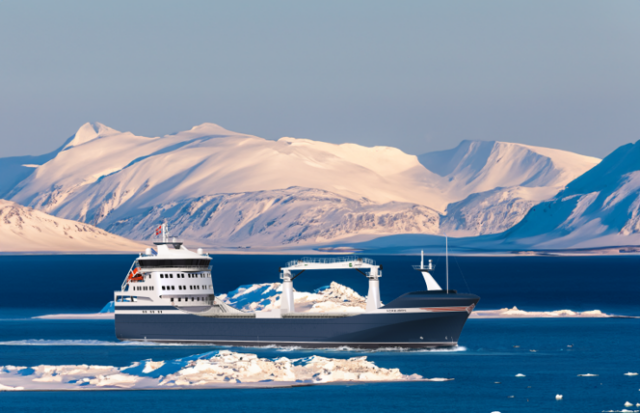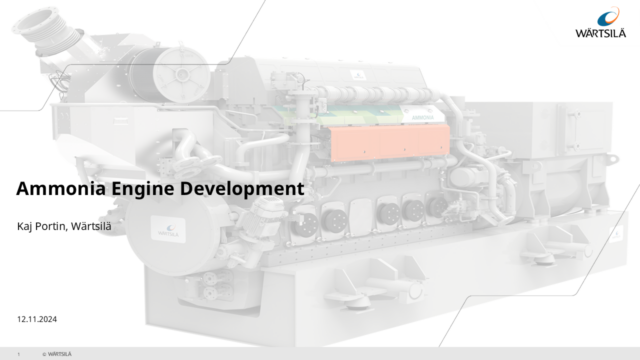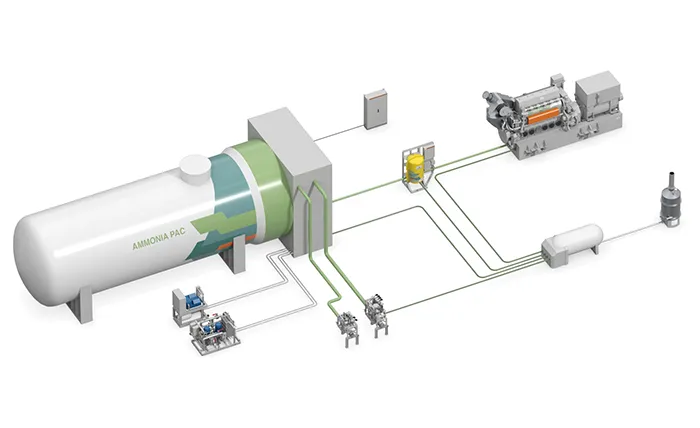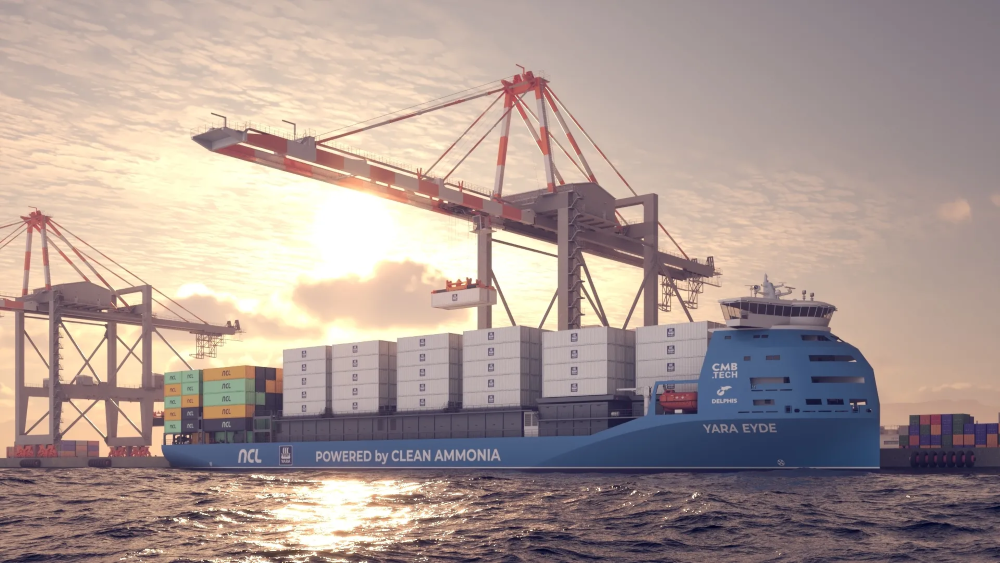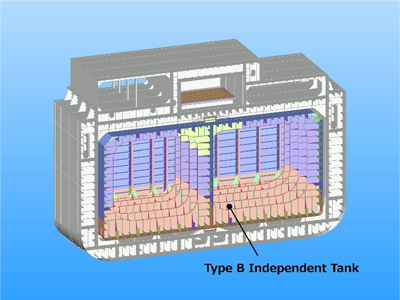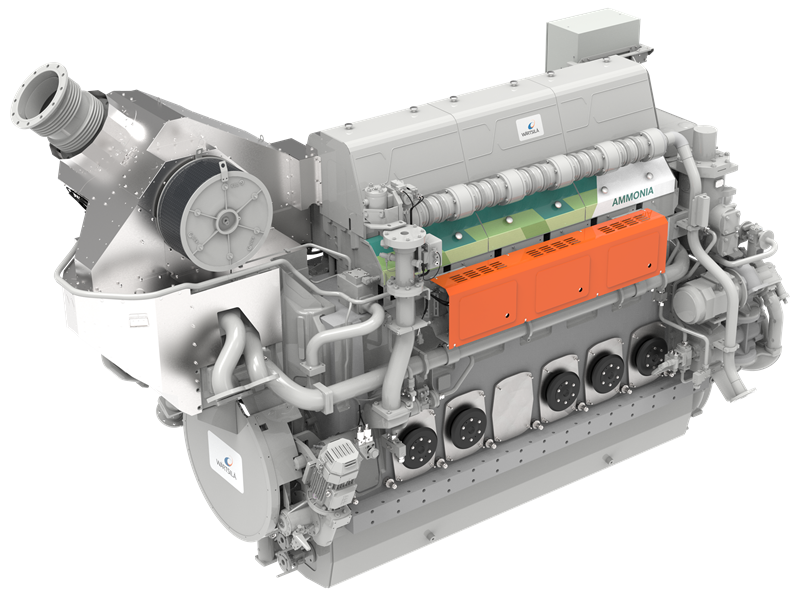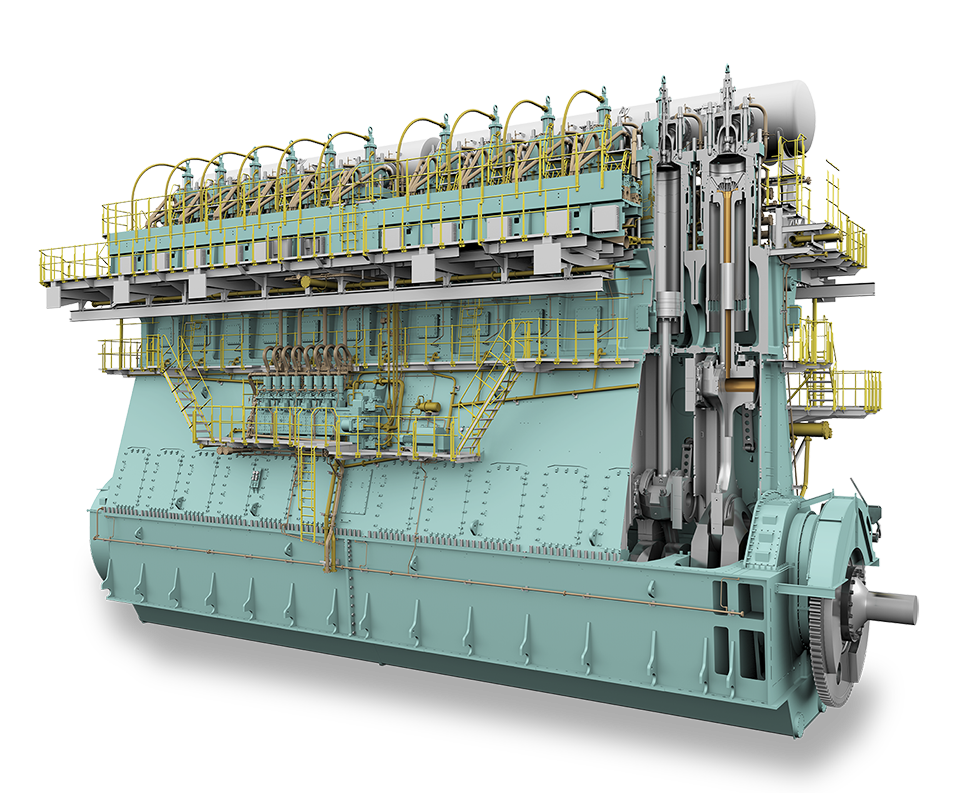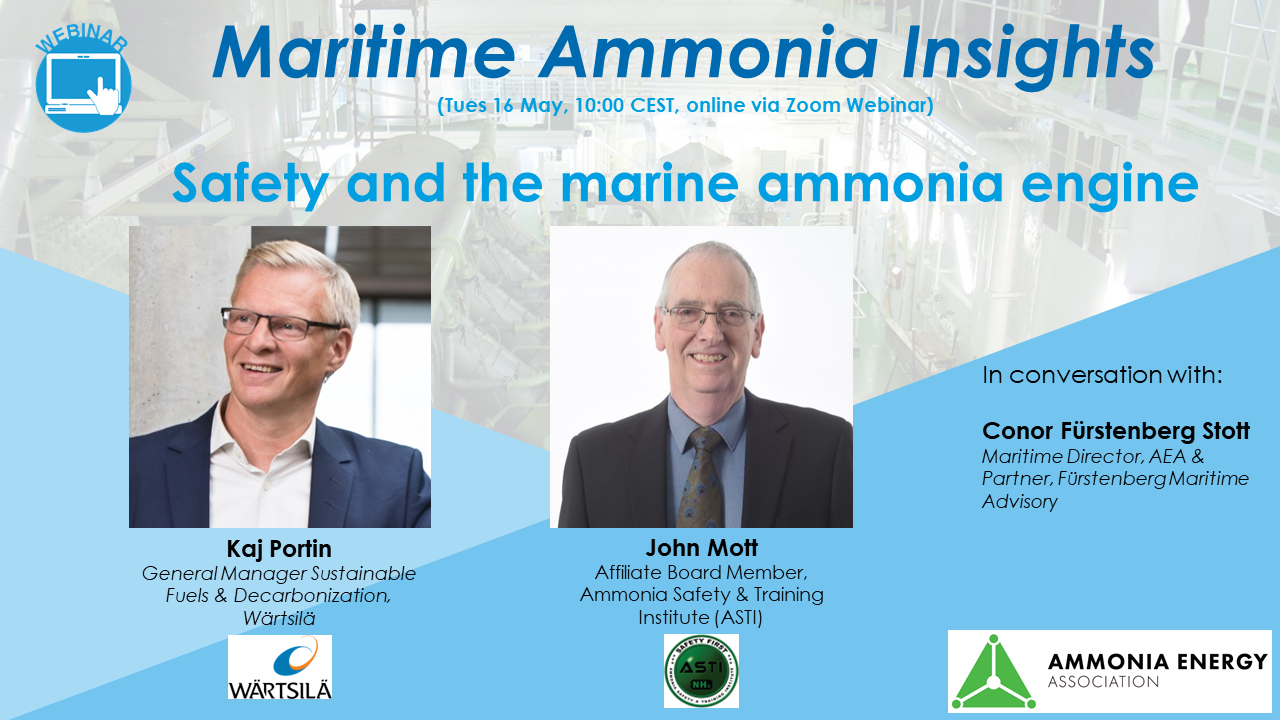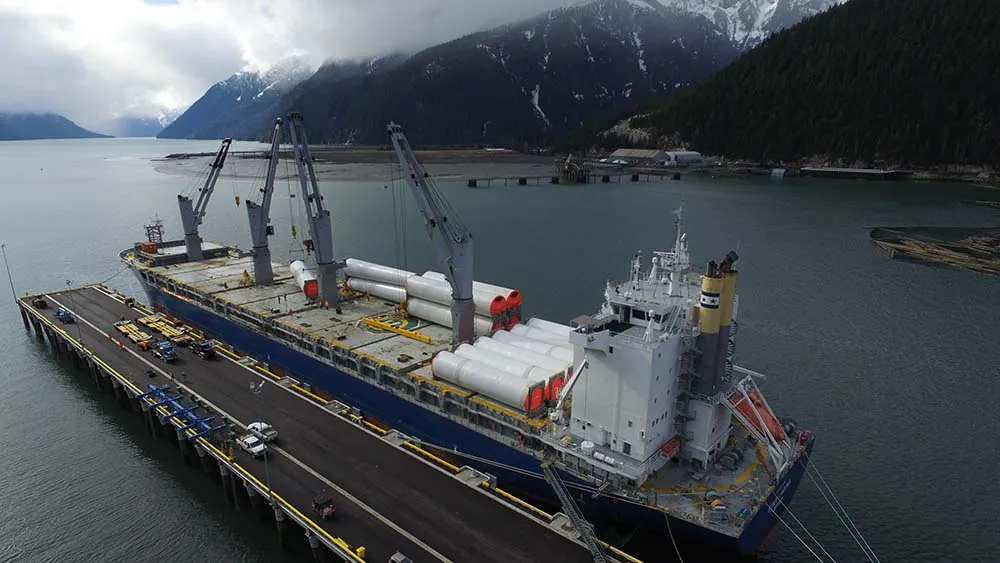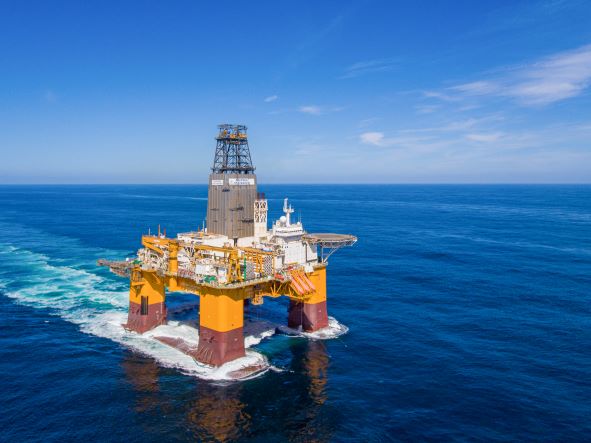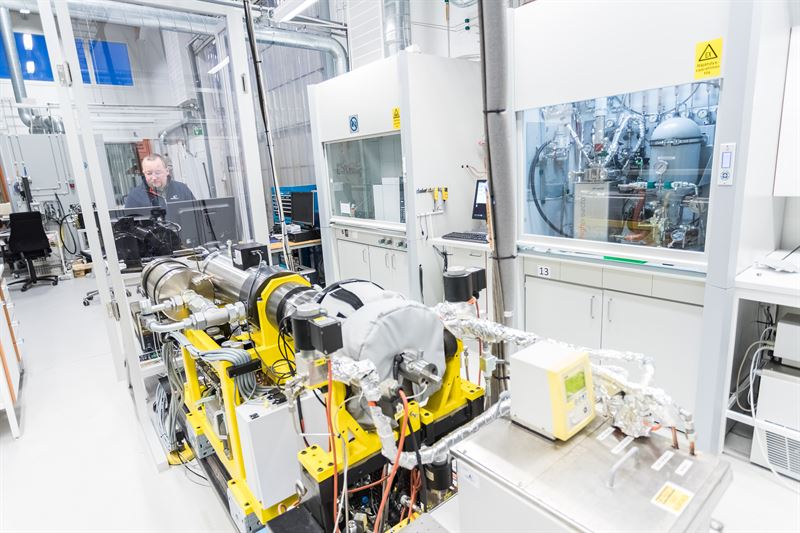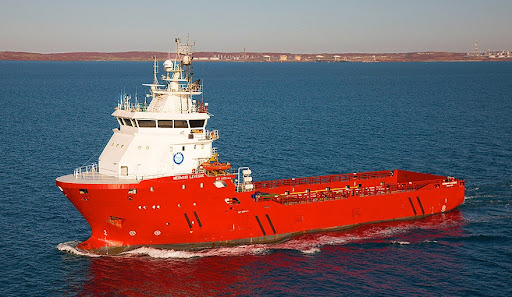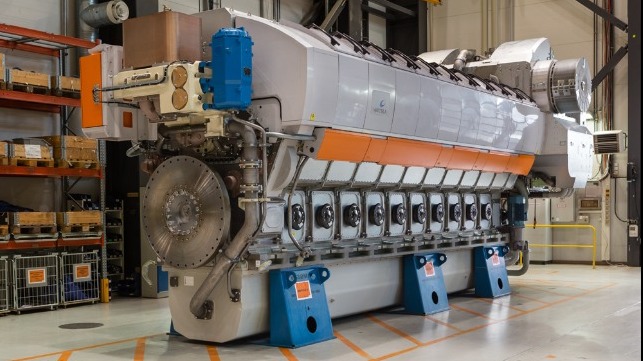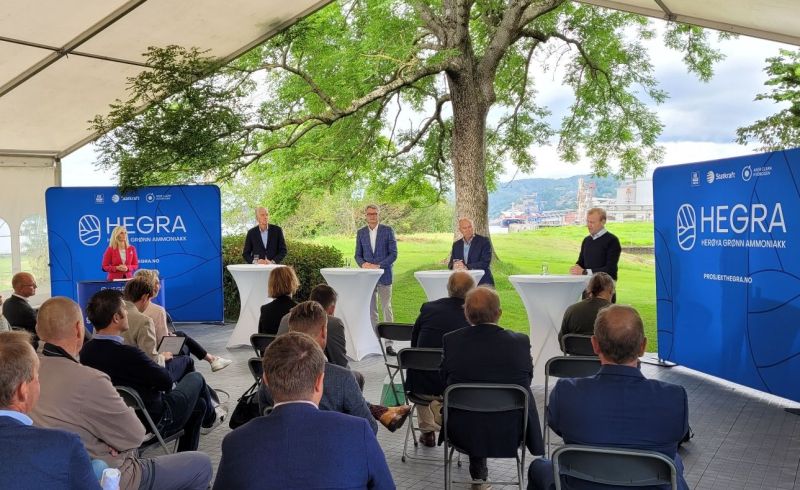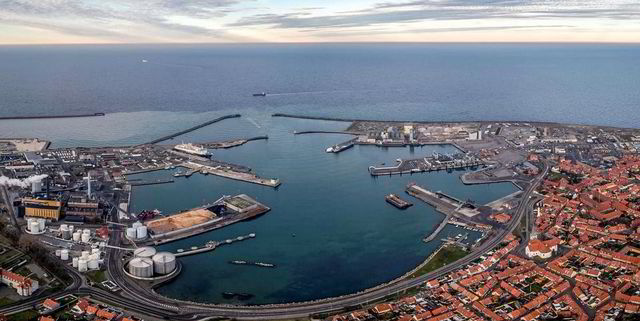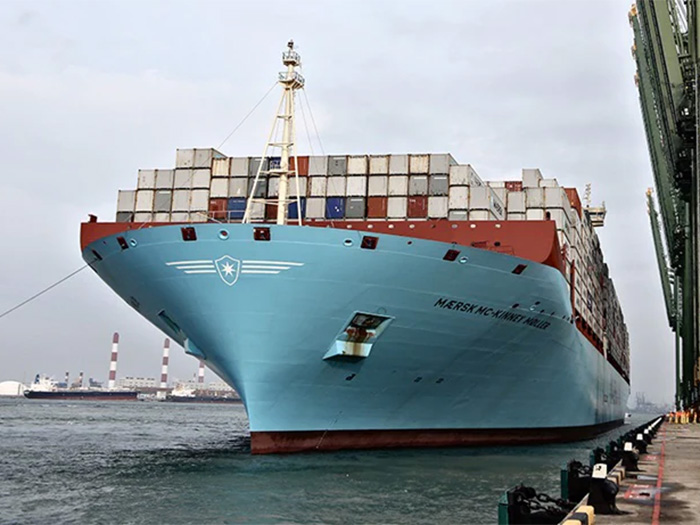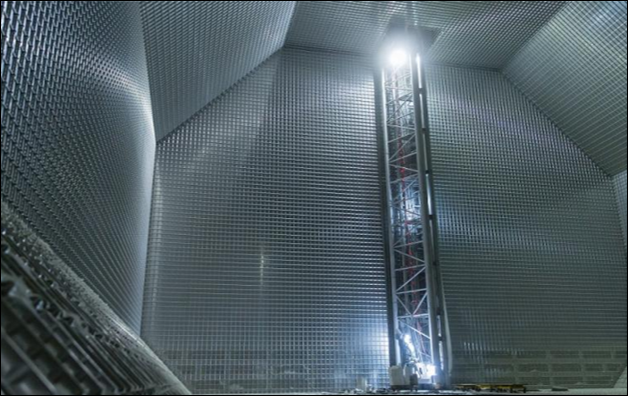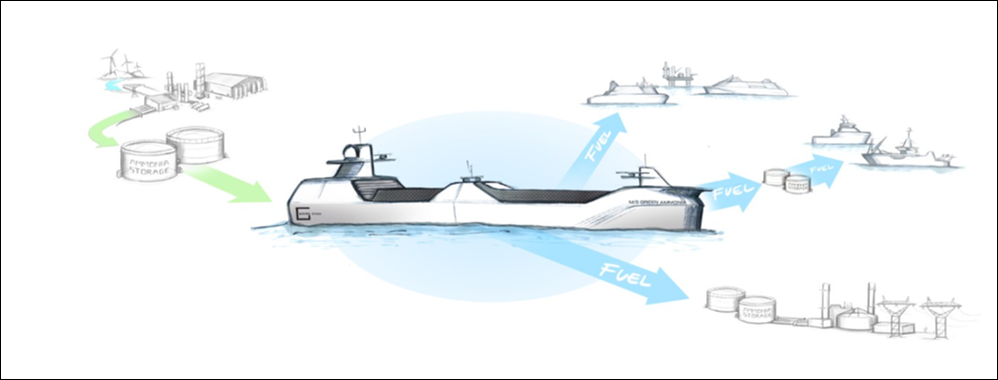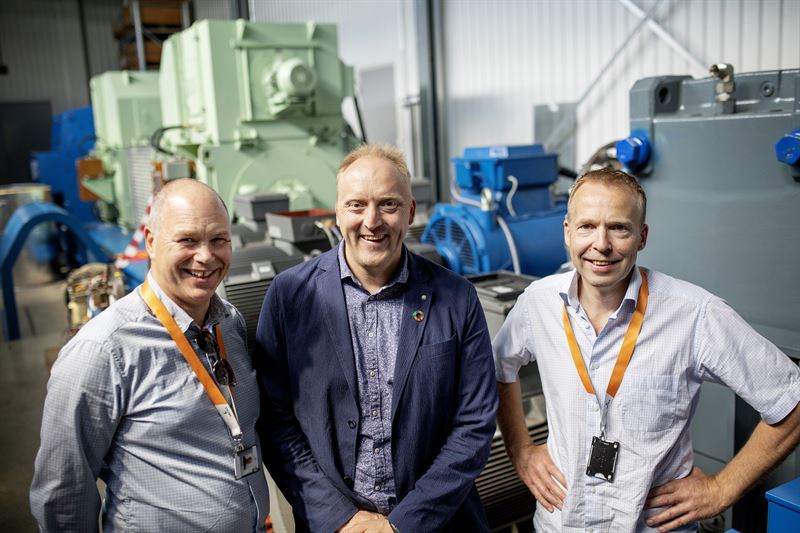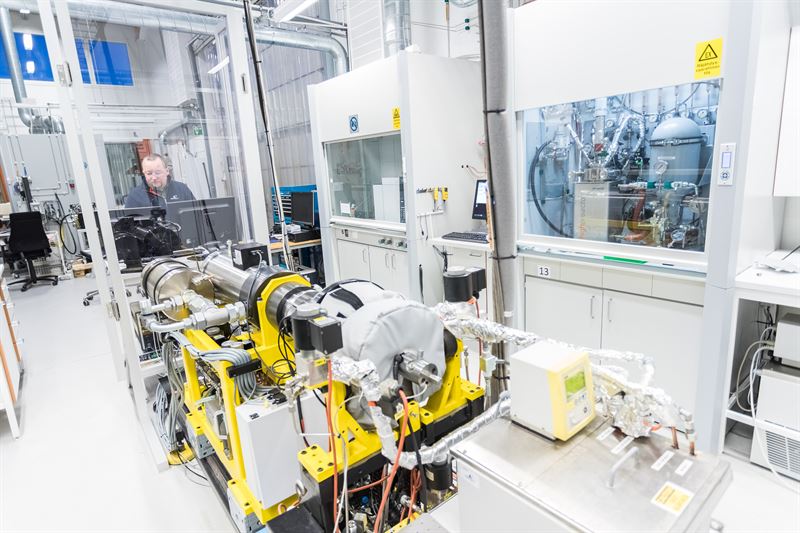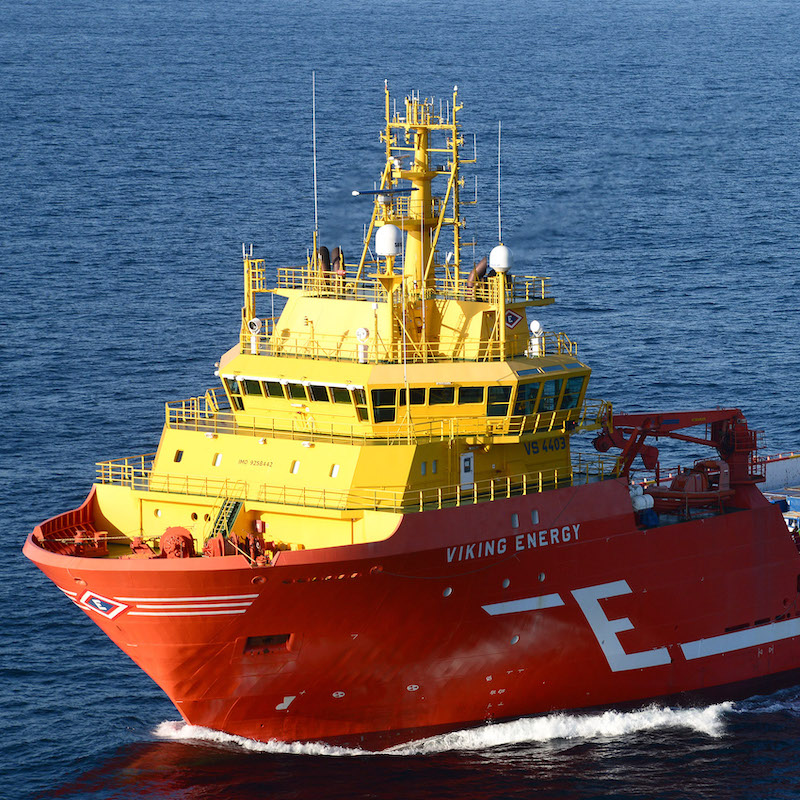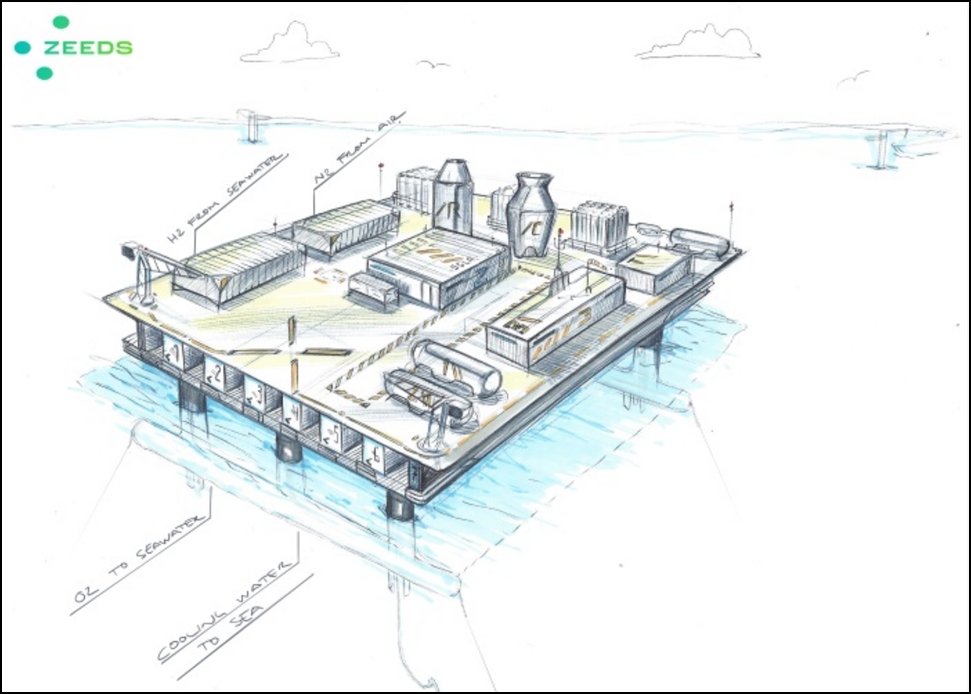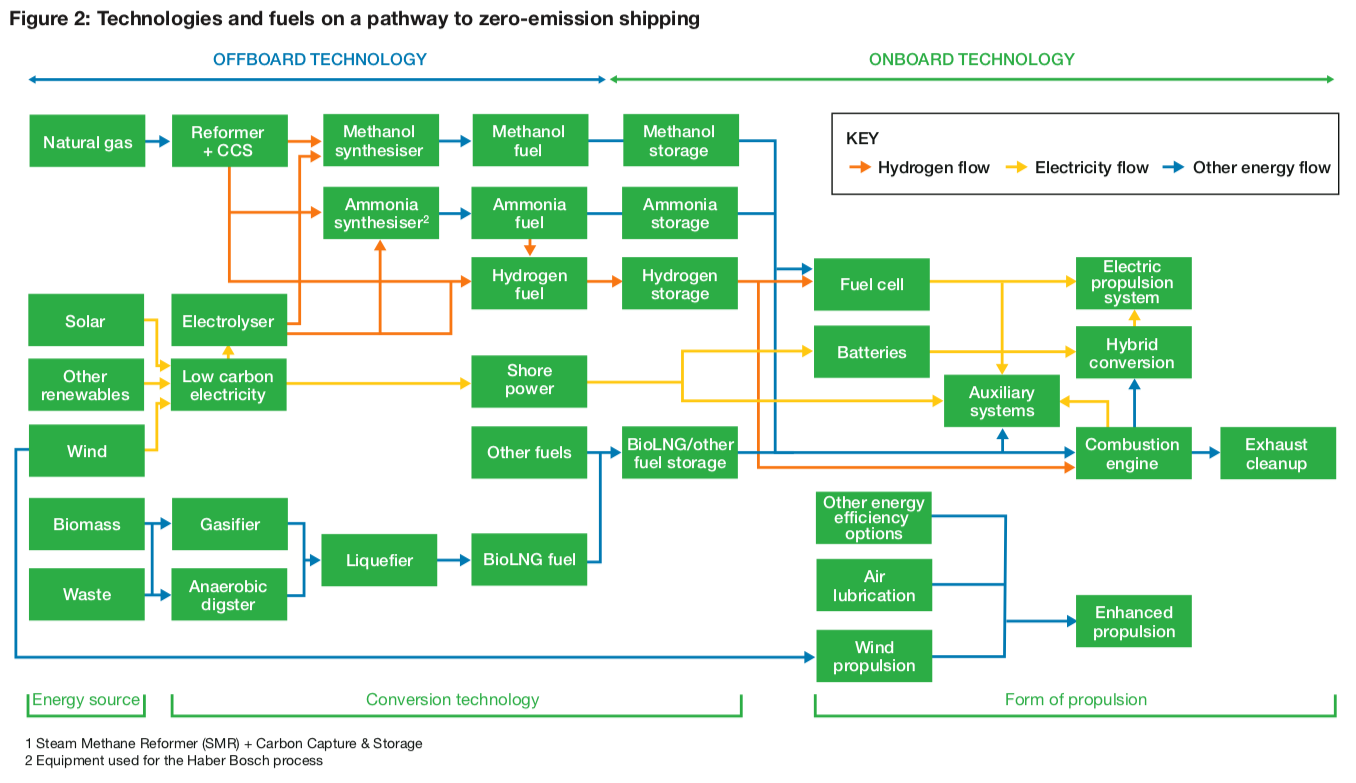Content Related to Wartsila
Presentation
Ammonia-fueled four-stroke engine performance & implementation, fuel supply systems
Explore the development of the Wärtsilä 25 Ammonia engine, including technical specs, testing results for emissions, and auxiliary systems including fuel storage & supply, and release mitigation.
Article
Training simulators for marine ammonia fuel
Julian Atchison August 11, 2025
Wärtsilä has supplied a new advanced simulation suite for the Akademi Laut Malaysia (ALAM) maritime training institute, featuring dual-fuel simulator technology and training for methanol and ammonia fuels across different engine types. In Kochi, India, Bernhard Schulte Shipmanagement (BSM) has just launched its first methanol bunker simulator, with an ammonia version to follow in early 2026.
Article
Emission performance of ammonia-fueled, four-stroke marine engines
Kevin Rouwenhorst June 03, 2025
We explore recent, full-scale, four-stroke engine testing results from IHI and Wärtsilä. Testing indicates N2O emissions can be almost fully eliminated with catalytic treatment, and significantly lower NOX emissions for engines running in ammonia mode, compared to running on diesel. While ammonia slip remains a key consideration due to the design of a four-stroke engine, catalytic treatment of the exhaust can eliminate even high concentrations, and release mitigation systems have already been designed and deployed to ensure safe operations.
Article
Wärtsilä, Höegh complete floating ammonia cracker concept
Julian Atchison April 25, 2025
The concept design can deliver up to 210,000 tons of pipeline-quality hydrogen per year from ammonia imports, and will feature in a number of projects in Germany.
Article
Singapore Maritime Week: decarbonizing shipping with Australia and other key partners
Julian Atchison March 31, 2025
At Singapore Maritime Week, Maritime & Port Authority of Singapore and Australia’s national science agency CSIRO announced funding for eight maritime decarbonization projects, including ammonia safety training, and an AI-based safety management system. MPA also signed agreements with ABS, the Ports of Rotterdam and Antwerp-Brugges, and confirmed it has contributed to early work on training guidelines for the safe handling of methanol and ammonia at the IMO.
Article
Setting the scene for ammonia maritime fuel: regulatory needs and timelines to decarbonize shipping
2025 is a critical year for the adoption of ammonia fuel in shipping. Here, we preview important upcoming meetings of the International Maritime Organization, what regulatory gaps are being filled by this work, potential candidates for decarbonization measures, and progress in engine development. All this sets the scene for incredible progress to be made in the coming years.
Article
Enova: funding for seven ammonia-fueled vessels to sail in Norway
Julian Atchison January 14, 2025
A new round of Norwegian government funding has awarded a total of $68 million to a series of ammonia-fueled vessel projects, including a replacement freighter to service a key cargo and postal route to Svalbard, platform supply vessels, and the bunkering/distribution vessel MS Green Ammonia.
Article
Ammonia Energy Conference 2024: Ammonia for Maritime Propulsion is full speed ahead!
Kevin Rouwenhorst November 26, 2024
During the recent 2024 Ammonia Energy Conference, we explored all the latest developments in ammonia-powered maritime propulsion. Engine makers reported strong progress ahead of deployment in 2026, the same year that large-scale vessels will hit the water. The panel explored early operations for the ammonia-powered A-Tug in Japan, as well as ancillary technology systems required for maritime ammonia engines, catalyst after-treatment systems for emission mitigation, and the potential for fuel additives to boost ammonia engine performance.
Article
Wärtsilä ammonia engine to power the Viking Energy
Julian Atchison August 30, 2024
Wärtsilä has been contracted to supply the total technology package for the conversion of the Viking Energy to run on ammonia fuel. The original plan to retrofit the vessel with a 2 MW solid oxide fuel cell system was delayed by supply chain and development challenges, but SOFC developer Alma Clean Power will continue to test and scale its direct ammonia-fed technology for maritime applications.
Article
Ammonia marine fuel supply systems: Wärtsilä and Amogy
Julian Atchison July 09, 2024
Wärtsilä Gas Solutions will now provide the ammonia fuel supply and cargo handling systems for all six of EXMAR’s dual-fuel vessels being built in South Korea. Meanwhile, Amogy and Mitsubishi have completed concept designs for two onboard systems: a powertrain combining ammonia cracking and hydrogen fuel cell for ships, and a hydrogen supply facility to provide hydrogen as pilot fuel to an ammonia-fueled engine.
Article
Marine engines ordered, construction contracts signed
Julian Atchison June 12, 2024
WinGD’s X‑DF‑A dual-fuel engines have been ordered by Singapore-based shipping giant AET for deployment onboard new Aframax tankers, being built in China. Fishing vessels operators Vardin and Framherji have ordered Wärtsilä 25 engines for a series of three fishing trawlers that will operate in the Faroe Islands. In construction news, CMB.TECH will build the Yara Eyde vessel for Yara and North Sea Container Line in China, with vessel delivery scheduled for mid-2026.
Article
Marine ammonia fuel systems, tanks, charters and vessel AiPs
Julian Atchison February 14, 2024
In marine ammonia news to begin 2024, we explore a volume-efficient, “prismatic” ammonia fuel tank design, a new long-term charter for ammonia shipping in the Pacific region, and two global gas exporters ordering ammonia-capable carriers for their fleets.
Article
Marine engine progress: 4-stroke hits the market, 2-stroke en-route
Geofrey Njovu December 22, 2023
Wärtsilä’s 4-stroke ammonia engine is now commercially available. Meanwhile, WinGD and CMB.TECH’s plan for newbuild vessels based on WinGD’s 72-bore ammonia engine design has been underwritten in partnership with China State Shipbuilding Corporation.
Article
New marine engine collaboration, safety systems and key AiPs awarded
Julian Atchison June 14, 2023
A new MoU between WinGD and Mitsubishi Shipbuilding will see the deployment of WinGD’s X-DF-A ammonia-fueled engines to a range of vessels. In Norway, Wärtsilä has unveiled a safety system designed for continuous onboard monitoring of ammonia leaks, featuring a staged combustion process to deal with accidental releases. And classification society DNV has awarded AiP to two significant ammonia-fueled vessel designs: the MS NoGAPs, and Viridis Bulk Carriers’ short sea bulk carrier.
Article
Safety and the marine ammonia engine
Conor Furstenberg Stott June 04, 2023
As part of our Maritime Ammonia Insights webinar series, we explored the safety learnings gained so far during the development of maritime ammonia fueled engines, as well as existing best practices for safe ammonia handling. John Mott (ASTI), Kaj Portin and Laura Sariola (both Wärtsilä) were joined in conversation by Conor Furstenberg Stott.
Article
IHI, NYK Line report successful marine engine testing in Japan
Julian Atchison May 23, 2023
Successful testing has been completed at IHI’s facilities in Ota, Japan. A four-stroke marine engine - fully integrated with exhaust gas aftertreatment and fuel supply systems - produced stable operations running on up to 80% ammonia fuel. Emissions of dinitrogen monoxide (N2O) and ammonia slip were reported as “virtually zero”.
Webinar
Safety and the marine ammonia engine
Explore the critical topic of engine room safety, and what design considerations would be needed on a future, ammonia-fueled vessel. What learnings can we apply from running prototype engines? What lessons can be learned from current ammonia-handling industries like refrigeration? And what training will be needed to build confidence in seafarers?
Article
Maritime developments: on-water cracking, AiPs and Singapore bunker study releases first results
Julian Atchison May 05, 2023
In maritime ammonia updates this week:
- In Europe, government funding will support the development of an ammonia cracking system that can be installed on existing LNG vessels (Norway), and the establishment of a floating production and storage facility connected to an offshore wind farm (Netherlands).
- Two AiPs have been granted: one for Korea’s first ammonia FSRU vessel, the other for a bunkering tanker in Singapore.
- H2Carrier and Trelleborg will develop a ship-to-ship ammonia transfer system.
- And GCMD has unveiled the results of their Singaporean ammonia bunker study. All risks identified for conducting pilot projects were found to be low or mitigable, with work towards those pilots to continue.
Article
Retrofitting vessels for ammonia fuel: new technical study from Grieg Star
Julian Atchison March 21, 2023
Grieg Star and a series of high-profile maritime consortium partners have assessed the full feasibility for retrofitting a Grieg Star L-Class vessel to run on ammonia fuel. The study concludes that technical & regulatory challenges will not be showstoppers in the transition. A combination of high investment costs, uncertainty over ammonia fuel availability & pricing and slow market development remain the biggest barriers, presenting significant risks for first movers.
Article
COP27: the Green Shipping Challenge
Julian Atchison November 25, 2022
The US and Norway launched the Green Shipping Challenge in Sharm el-Sheikh this month. The Challenge encompasses more than forty different announcements & initiatives, including ammonia fuel production in Namibia, ammonia-powered cargo shipping in Finland, ammonia-powered pilot vessels in Norway's Green Shipping Programme, and a host of new green corridor projects. A trio of new reports have also provided an assessment of progress to date in green corridor development, and suggested key next steps.
Article
Ammonia-powered cargo shipping in Finland
Julian Atchison October 06, 2022
Green NortH2 Energy, Meriaura and Wärtsilä will develop a cargo vessel capable of running on ammonia fuel. Propelled by Wärtsilä multi-fuel engines, the vessel will be owned and operated by Meriaura, with Green NortH2 Energy to supply renewable ammonia fuel from its to-be-built production plant in Naantali, southwest Finland.
Article
KBR: ammonia-powered offshore drilling
Julian Atchison September 21, 2022
KBR, Odfjell, Equinor and Wärtsilä will all collaborate to study conversion of diesel generators on board semi-submersible, offshore drilling vessels to ammonia-fueled generators. On-board power for equipment and heavy machinery on these vessels is typically provided by fossil-fed generators. As fuel costs increase, operators are looking to new energy solutions including offshore wind and alternative fuels like hydrogen & ammonia.
Article
Wärtsilä launches new multi-fuel maritime engine
Julian Atchison September 21, 2022
Wärtsilä has just launched its medium-speed, 4-stroke, Wärtsilä 25 engine, intended to be the first Wärtsilä engine to run on ammonia fuel. From 2023 a technology upgrade will be commercially available to allow the engine to run on alternative fuels like ammonia, with a fully-compliant NOx abatement system already available when running on fossil-based fuels. At the recent Australia conference, MAN ES reported that their two-stroke ammonia engine will be commercially available in 2024, with testing to commence next year.
Article
Wärtsilä to coordinate EU-funded program for ammonia engine development
Julian Atchison April 06, 2022
Coordinated by Wärtsilä, an R&D group has been provided with €10 million for the Ammonia 2-4 project. The project aims to complete a retrofit for a two-stroke engine vessel by 2025, as well as establishing a laboratory demonstrator for an ammonia-fueled, four-stroke maritime engine.
Webinar
ZEEDS - Zero Emission Energy Distribution at Sea
Meet Grieg Maritime and Wärtsilä as we discuss ZEED: Zero Emission Energy Distribution at Sea. The Norway-based consortium is developing two flagship projects: the design and build of the MS Green Ammonia, and the development of an onshore ammonia fuel supply chain out of Berlevåg harbour.
Article
WinGD to develop ammonia maritime engines by 2025
Julian Atchison December 08, 2021
Swiss-based engine developer WinGD has announced that its current portfolio of low-speed maritime engines will be ready to operate on methanol and ammonia by 2024 and 2025 respectively. Although WinGD's diesel-fueled X Engine series will require retrofits, the X-DF Engine series is already designed to run on biogas and will not require major modifications to run on methanol or ammonia.
Article
Fortescue, LMG Marin and Eidesvik to launch ammonia-powered ships
Julian Atchison November 17, 2021
Four ammonia-powered ships were announced this week, with a mixture of retrofits and newbuilds. Fortescue Future Industries will convert the MMA Leveque to run on near 100% ammonia fuel within 12 months. Grieg Maritime and Wartsila's MS Green Ammonia vessel has a designer, with LMG Marin engaged to complete a concept by mid next year. And Eidesvik, Aker BP and Alma (formerly Prototech AS) have joined forces to deploy the ammonia-fed fuel cell technology being developed for the Viking Energy project.
Article
Wärtsilä & Møkster join forces, Japanese maritime consortium takes next steps
Julian Atchison November 01, 2021
Wärtsilä and Simon Møkster Shipping will explore the feasibility of using ammonia as the main fuel in dual fuel engines. Currently Møkster's fleet operates on LNG. In Japan, NYK Line, Japan Engine Corporation, IHI Power Systems, Nihon Shipyards and ClassNK will all collaborate on a demonstration project of ammonia-powered vessels in Japan. First announced in 2020 with three vessel concepts, two of the three vessel designs now have a commercialisation schedule fully defined (the A Tug and the AFAGC).
Article
Maritime ammonia: vessel conversions and new engines by 2023
Julian Atchison October 20, 2021
Eidesvik Offshore and Wärtsilä will cooperate in the world's first ammonia conversion project, with an existing offshore supply vessel (OSV) to be retrofitted with an ammonia-fueled combustion engine, fuel supply and safety system. The project has a completion date of late 2023. In the engine space, MAN ES has signed a new agreement with Mitsui E&S and Mitsui O.S.K. Lines (MOL) to have purchase contracts for its low-speed, ammonia-fueled main vessel engine finalised in 2023.
Article
Korean shipbuilders embrace ammonia-fueled solutions
Julian Atchison September 28, 2021
Two announcements this week: i) Samsung Heavy Industries and Wärtsilä have agreed to jointly to develop new-build vessels with 4-stroke, ammonia-fueled auxiliary engines; and ii) Bureau Veritas has awarded Approval in Principle to Hyundai Heavy Industries and KSOE for their new, ammonia-fueled vessel design.
Article
A trio of green ammonia updates from Norway
Julian Atchison August 18, 2021
This week in Norway: i) Yara, Aker Clean Hydrogen and Norway's state hydropower company Statkraft are all equal owners in HEGRA, a new entity that will steer electrification & decarbonisation at Yara's Porsgrunn ammonia plant, ii) St1 and Horisont will jointly develop a new green ammonia project in Finnmark, northern Norway, and iii) Grieg Edge and hydro generator Arendals Fossekompani launch a new green ammonia venture: North Ammonia.
Article
Wärtsilä launches major hydrogen and ammonia test program
Julian Atchison July 20, 2021
This week Wärtsilä announced: i) some key updates in its ammonia and hydrogen-powered engine testing research to date and ii) some key upcoming milestones for its R&D program.
Article
The Ammonia Wrap: green bunker fuel hub planned for the Baltic Sea
Julian Atchison June 15, 2021
News this week: future green bunker fuel hub planned for Bornholm, more Haldor Topsoe news, Australia partners up, 23 key players kick-off ammonia maritime fuel study, $100 billion hydro-hydrogen and ammonia in the DR Congo, Egypt planning $4 billion green hydrogen project, AP Ventures leads investment in Amogy, full steam ahead for MS Green Ammonia, new blue ammonia plant in Canada and new engineering contracts signed for key blue ammonia projects.
Article
Ammonia Energy Live March 2021: event wrap
Julian Atchison April 07, 2021
Last week we presented the second episode in our monthly webinar series: Ammonia Energy Live. Every month we’ll explore the wonderful world of ammonia energy and the role it will play in global decarbonisation - with an Australian twist. This episode we welcomed Sammy Van Den Broeck, VP Project & Portfolio at Yara Clean Ammonia. Sammy was invited to give his thoughts on the key challenges and opportunities in the global ammonia transition, and explain to us why Australia is so important to Yara's future clean ammonia plans. Interviewing Sammy were Jacinta Bakker (Research Fellow in the MacFarlane Laboratory at Monash University) and Allison Gwilt (Senior Project Engineer, Future Fuels at Origin Energy).
Article
The Ammonia Wrap: Japan developments, ammonia from wastewater, Fortescue's new carbon-neutral goal, project updates from Australia and H2Pro
Julian Atchison March 18, 2021
Welcome to the Ammonia Wrap: a summary of all the latest announcements, news items and publications about ammonia energy. This week: new Japanese developments, new AiP for ammonia-fueled vessel, Singapore bunkering study, new ammonia from wastewater initiative, Fortescue brings carbon neutrality goals forward to 2030, Australian project updates for Hazer and H2U, and H2Pro updates from Israel.
Article
Ammonia Energy Live February - 2021
Julian Atchison March 04, 2021
Last week we presented the first episode in our monthly webinar series: Ammonia Energy Live. Every month we’ll explore the wonderful world of ammonia energy and the role it will play in global decarbonisation - with an Australian twist. To kick things off we wanted to set the scene for 2021 and give you a sense of where the ammonia transition is at - key projects, key milestones and things to be excited about going forward. And, since this is an Australian-focused series, we wanted to explore what’s important about Australia to the ongoing work of the AEA.
Article
Maritime Sector is Set to Become 'Ammonia-Ready'
Stephen H. Crolius February 18, 2021
Last month brought news of "the world’s first ammonia ready vessel.” According to an American Bureau of Shipping (ABS) press release, the vessel, currently under construction in China, will comply “with the ABS Ammonia Ready Level 1 requirements, indicating it is designed to be converted to run on ammonia in the future.” When completed, the 274-meter ship (and possibly two others of identical design) will join the fleet of Avin International.
Article
Grieg Maritime and Wärtsilä to Build Ammonia-Fueled Ammonia Tanker
Stephen H. Crolius January 21, 2021
Last month Norwegian shipping company Grieg Maritime Group and Finnish engine and energy equipment manufacturer Wärtsilä announced plans to build an ammonia-fueled tanker that will be ready for service in 2024. The MS Green Ammonia will transport low-carbon ammonia along the Norwegian coast from a factory that will be built in the far-north municipality of Berlevåg.
Article
Picking bunker winners: the mono-fuel / dual-fuel duel
Trevor Brown September 24, 2020
This week, DNV GL published its annual Maritime Forecast to 2050, concluding that “e-ammonia, blue ammonia and bio-methanol are the most promising carbon-neutral fuels in the long run.” DNV GL’s assumptions that determine this long run, however, suggest a significant mid-term reliance on fossil LNG. This risks locking the industry into a long-term emissions trajectory incompatible with the IMO’s 2050 GHG targets, in part because of significant fuel supply and infrastructure investments. These investments could become more ‘sticky’ than expected. A host of alternative opinions have been published in the days before and after DNV GL published its report. These suggest that, for ammonia, the long run could begin this decade. Among others, MAN ES has announced that its ammonia engine will be available for retrofits by 2025.
Article
Wärtsilä, Repsol, and Knutsen to test ammonia four-stroke engine
Trevor Brown July 01, 2020
This week, engine manufacturer Wärtsilä announced “the world’s first long term, full-scale, testing of ammonia as a fuel in a marine four-stroke combustion engine.” The project will begin in the first quarter of 2021, at the Sustainable Energy Catapult Centre’s testing facilities at Stord, Norway. It is supported by a NOK 20 million (USD 2 million) grant from the Norwegian Research Council.
Article
Maritime Ammonia: ready for demonstration
Trevor Brown May 07, 2020
At least four major maritime ammonia projects have been announced in the last few weeks, each of which aims to demonstrate an ammonia-fueled vessel operating at sea. In Norway, Color Fantasy, the world's largest RORO cruise liner, will pilot ammonia fuel. Across the broader Nordic region, the Global Maritime Forum has launched NoGAPS, a major consortium that aims to deploy "the world's first ammonia powered deep sea vessel" by 2025. In Japan, a new industry consortium has launched that goes beyond on-board ship technology to include "owning and operating the ships, supplying ammonia fuel and developing ammonia supply facilities." And the Ministry of Land, Infrastructure, Transport and Tourism (MLIT), which published its roadmap last month, aims to demonstrate ammonia fuel on "an actual ship from 2028" — specifically, a 80,000 dwt ammonia-fueled bulk carrier.
Article
Wärtsilä Tests Internal Combustion of Ammonia
Stephen H. Crolius April 02, 2020
Last week Wärtsilä, the Finnish engine and energy equipment manufacturer, unveiled the latest stage in its engagement with ammonia as an energy vector. In a press release headlined “Wärtsilä advances future fuel capabilities with first ammonia tests,” the company described a test program aimed at exploring ammonia’s properties as an internal combustion fuel. Kaj Portin, General Manager of Fuel & Operational Flexibility in Wärtsilä’s Marine division, commented that “the first tests have yielded promising results.”
Article
Viking Energy to be retrofit for ammonia fuel in 2024
Trevor Brown January 23, 2020
This morning, it was announced that the "Viking Energy," a supply vessel for Equinor's offshore operations, will be modified to run on a 2 MW direct ammonia fuel cell. This will be a five year project: the technology will be scaled-up on land before being installed on the vessel, which will begin a year of GHG emission-free operations in 2024. The Norwegian partners leading this "world's first" project include shipowner Eidesvik, contractor Equinor, and ammonia producer Yara, as well as Wärtsilä (Wärtsilä Norway), responsible for power technology and ammonia storage and distribution systems, and Prototech, delivering the fuel cell system.
Article
The maritime sector's ammonia learning curve: moving from scenario analysis to product development
Trevor Brown October 25, 2019
ANNUAL REVIEW 2019: The maritime industry is learning about ammonia fast. It is searching for a new bunker fuel, and ammonia is one of the few options that can realistically deliver a 50% reduction in the sector's GHG emissions by 2050. The IMO declared this target in April 2018 and, in last year's Annual Review, I wrote about all the reports that were published demonstrating that ammonia could deliver this outcome. In the last 12 months, by contrast, we have moved quickly beyond analysis and into engineering design, technology testing, and product development.
Article
Bunker Ammonia: Rapid Cross-Sector Progress from Industry, Government, Finance, and Class Societies
Trevor Brown August 09, 2019
The maritime industry has been engaged in a frenzy of research since April 2018, when the International Maritime Organization (IMO) announced its Initial GHG Strategy mandating a 50% reduction in shipping's emissions by 2050. Three recent announcements illustrate the speed and depth of progress across a range of maritime stakeholders. In the government sector, the UK has launched its Clean Maritime Plan, which identifies ammonia as one of its strategic "clean growth opportunities." In finance, a coalition of 11 banks representing a shipping portfolio of around $100 billion has launched the Poseidon Principles to "redefine the role of banks in the maritime shipping sector." And class society ABS launched its Global Sustainability Center in Singapore to analyse, certify, and validate alternative fuels and new technologies; its Director of Global Sustainability will speak at the inaugural conference of the Ammonia Energy Association--Australia, held in Clayton, VIC, on August 22-23. His subject will be "Green ammonia as marine bunker fuel."
Article
New Coalition Plans to Build Offshore Green Fueling Hubs
Stephen H. Crolius June 13, 2019
Last week Wärtsilä, the Finnish engine and energy equipment manufacturer, unveiled a concept for producing and distributing low-carbon maritime fuels from purpose-built facilities in the waters off northern Europe. Dubbed Zero Emission Energy Distribution at Sea (ZEEDS), the initiative is intended to help meet the International Maritime Organization’s target of halving the shipping sector's carbon dioxide emissions by 2050. And although Wärtsilä’s press release on June 3 mentions only “clean fuels,” the headline used by logistics-sector publisher Freight Week for their June 5 story is “Offshore fuel hubs to supply green ammonia for zero-emission future.”


